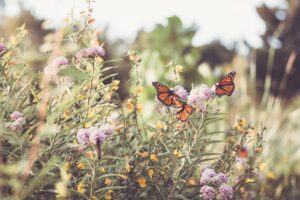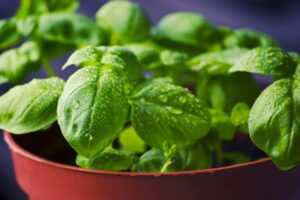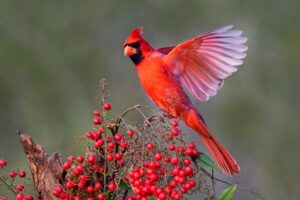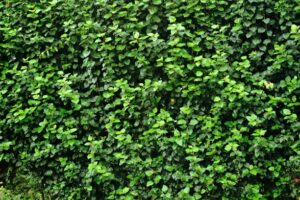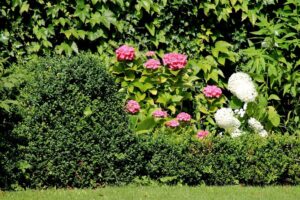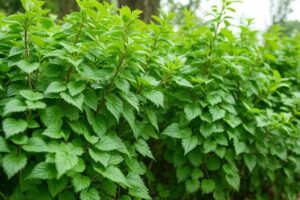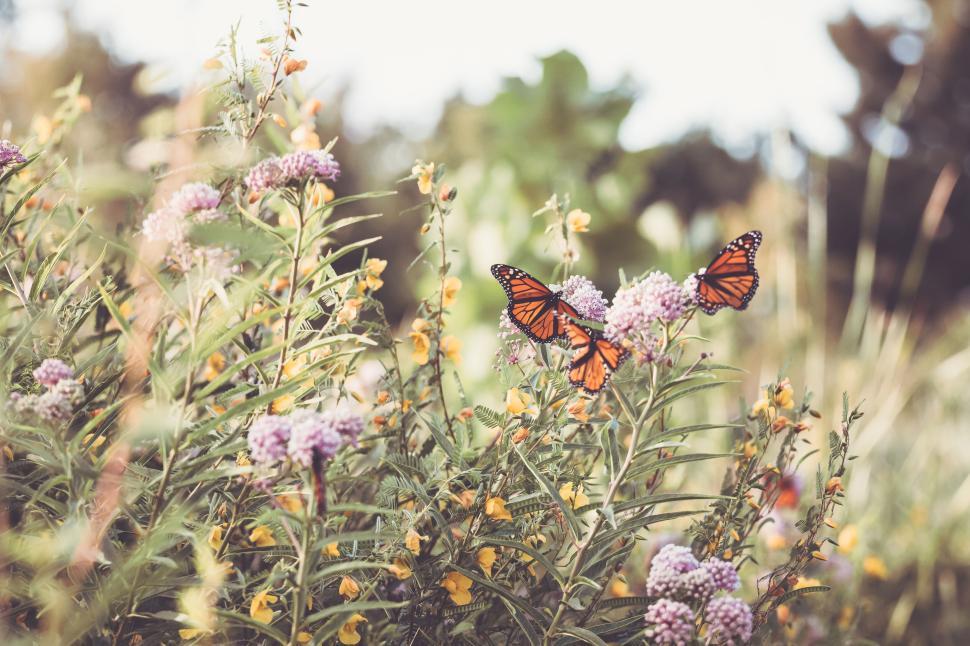Understanding the Natural Attraction of Butterflies to Your Yard
Butterflies are not only beautiful and delicate creatures, but they also play a crucial role in our ecosystem. Understanding their natural attraction to your yard can help you create a welcoming environment that attracts these magnificent insects.
One key factor in attracting butterflies to your yard is the presence of nectar-rich flowers. Butterflies are primarily nectar feeders, and they rely on the abundant supply of sweet, sugary liquid to fuel their flight and maintain their energy levels. By planting a variety of flowering plants that bloom at different times throughout the year, you can ensure a continuous source of nectar for the butterflies. The vibrant colors and sweet scents of these flowers act as beacons, drawing the attention of butterflies from near and far. Creating a diverse range of nectar-rich flowers will not only attract different species of butterflies to your yard but will also provide a visual delight for you to enjoy.
• Plant a variety of flowering plants that bloom at different times throughout the year
• Ensure a continuous source of nectar for butterflies
• Vibrant colors and sweet scents act as beacons for attracting butterflies
• Create a diverse range of nectar-rich flowers to attract different species of butterflies
• Enjoy the visual delight of beautiful flowers in your yard
The Importance of Creepers in Creating a Butterfly-Friendly Environment
Creepers play a vital role in creating a butterfly-friendly environment. These climbing plants provide essential elements that attract and sustain butterflies in your yard. With their ability to spread and cover ground or climb structures, creepers offer shelter, nesting sites, and feeding opportunities for these delicate creatures. By incorporating creepers into your garden, you can enhance the overall habitat for butterflies and increase the likelihood of their presence.
One of the main benefits of creepers in attracting butterflies is their ability to provide diverse and abundant food sources. Creepers produce nectar-rich flowers that serve as a valuable food source for adult butterflies. These flowering plants offer a bounty of sweet nectar that butterflies feed upon, providing them with the essential energy they need for mating, flying, and survival. Furthermore, creepers also attract other insects, such as bees and moths, which are additional food sources for butterflies in their larval stages. By creating a garden filled with different varieties of creepers, you can attract a wide range of butterfly species and support their entire life cycle.
• Creepers offer shelter and nesting sites for butterflies
• Creepers provide feeding opportunities for butterflies
• Creepers enhance the overall habitat for butterflies
• Creepers produce nectar-rich flowers that serve as a valuable food source for adult butterflies
• Different varieties of creepers attract a wide range of butterfly species
• Creepers also attract other insects, such as bees and moths, which are additional food sources for butterflies in their larval stages.
Identifying Native Creepers That Attract Butterflies in Your Region
Native creepers play a vital role in attracting butterflies to your yard. These plants, specifically adapted to your region’s climate and soil conditions, provide the perfect habitat and food source for butterflies. By identifying the native creepers that attract butterflies in your area, you can create a thriving ecosystem that supports these beautiful insects.
One way to identify native creepers is by researching which plant species are naturally found in your region. Local gardening resources, botanical gardens, or native plant societies can provide valuable information on the specific creepers that attract butterflies in your area. Additionally, talking to experienced gardeners or butterfly enthusiasts in your community can offer insights into the best native creepers to incorporate into your yard. Remember, the more closely aligned the plants are with your region, the more likely they are to attract and support native butterfly populations.
• Research plant species naturally found in your region
• Consult local gardening resources, botanical gardens, or native plant societies
• Seek advice from experienced gardeners or butterfly enthusiasts in your community
• Choose plants closely aligned with your region to attract and support native butterflies
The Role of Nectar-Rich Flowers in Attracting Butterflies
Nectar-rich flowers play a crucial role in attracting butterflies to your yard. These colorful and fragrant blooms serve as a vital source of food for adult butterflies. When selecting nectar-rich flowers, it is important to choose a variety of species that bloom throughout the year to provide a continuous supply of nectar for butterflies. By offering a diverse range of nectar-rich flowers, you can create a captivating and enticing environment for butterflies to visit and linger.
The abundance of nectar in these flowers serves as a powerful magnet that draws butterflies from afar. The sweet and sugary liquid inside the blossoms acts as a high-energy fuel for these delicate creatures. As butterflies feed on the nectar, they inadvertently help in the pollination process, transferring pollen from flower to flower and aiding in their reproduction. Therefore, by incorporating a wide selection of nectar-rich flowers into your yard, you can not only attract butterflies but also contribute to the overall health and biodiversity of your local ecosystem.
• Nectar-rich flowers provide a crucial source of food for adult butterflies.
• Selecting a variety of nectar-rich flower species that bloom throughout the year ensures a continuous supply of nectar for butterflies.
• Offering a diverse range of nectar-rich flowers creates an enticing environment for butterflies to visit and stay in your yard.
• The abundance of nectar acts as a magnet, drawing butterflies from afar to these flowers.
• Butterflies feed on the sweet and sugary liquid inside the blossoms, which serves as high-energy fuel for them.
• As butterflies feed on the nectar, they inadvertently aid in the pollination process by transferring pollen between flowers.
• Incorporating a wide selection of nectar-rich flowers not only attracts butterflies but also contributes to the overall health and biodiversity of your local ecosystem.
Creating a Suitable Habitat for Butterflies with Creepers
Butterflies are delicate creatures that require a suitable habitat to thrive in our yards. Creating the ideal environment can be achieved by incorporating creepers in your landscaping. These climbing plants not only add beauty to your outdoor space but also provide a range of benefits for butterflies.
Creepers offer butterflies a natural shelter and protection from predators. The dense foliage of creepers creates a safe haven for butterflies to rest, hide, and seek refuge during unfavorable weather conditions. Furthermore, the tangled branches and leaves of the creepers provide a barrier against strong winds, allowing butterflies to flutter and feed undisturbed. By strategically planting creepers in your yard, you can ensure that butterflies have a suitable habitat that meets their needs throughout their life cycle.
• Creepers provide natural shelter and protection for butterflies from predators.
• The dense foliage of creepers creates a safe haven for butterflies to rest, hide, and seek refuge during unfavorable weather conditions.
• Tangled branches and leaves of creepers act as a barrier against strong winds, allowing butterflies to flutter and feed undisturbed.
• By strategically planting creepers in your yard, you can ensure that butterflies have a suitable habitat that meets their needs throughout their life cycle.
Incorporating Host Plants for Butterfly Larvae in Your Yard
Incorporating host plants for butterfly larvae in your yard is an essential step in creating a thriving butterfly-friendly environment. These host plants serve as the primary food source for butterfly caterpillars, providing them with vital nutrients and sustenance during their early growth stages. By including host plants in your yard, you are not only attracting adult butterflies but also supporting their entire life cycle.
There is a wide variety of host plants to choose from, depending on the butterfly species in your region. For example, milkweed is a common and popular host plant for monarch butterflies. Other host plants for various butterfly species include dill, parsley, fennel, and nettle. Researching the specific host plants preferred by butterflies in your area will ensure that you provide the necessary resources for their survival and reproduction. By incorporating these host plants into your yard, you are creating a welcoming and nurturing environment for butterfly larvae, which will ultimately lead to a greater number of adult butterflies gracing your garden.
• Host plants serve as the primary food source for butterfly caterpillars
• Including host plants in your yard attracts adult butterflies and supports their entire life cycle
• Milkweed is a common and popular host plant for monarch butterflies
• Other host plants for various butterfly species include dill, parsley, fennel, and nettle
• Researching specific host plants preferred by butterflies in your area ensures necessary resources for survival and reproduction
• Incorporating host plants creates a welcoming and nurturing environment for butterfly larvae
• Greater number of adult butterflies will grace your garden
Seasonal Considerations: Creepers That Attract Butterflies throughout the Year
When it comes to attracting butterflies to your yard, understanding the seasonal considerations is crucial. By incorporating the right creepers into your landscape design, you can ensure a continuous supply of butterfly-friendly habitat throughout the year.
In the spring and summer months, consider planting vines such as honeysuckle and trumpet vine. These fast-growing creepers produce abundant nectar-rich flowers that attract a wide variety of butterflies. Their vibrant blooms not only provide a visual feast but also serve as a vital food source for adult butterflies, allowing them to fuel up with energy. Additionally, these creepers offer shelter and opportunities for egg-laying, making them a valuable addition to any butterfly-friendly garden.
As the seasons transition into fall and winter, it’s important to choose creepers that can withstand cooler temperatures. Creepers like Virginia creeper and winter jasmine are excellent choices. Their hardy nature allows them to thrive even when the weather gets colder. These vines may not produce as many flowers as their spring and summer counterparts, but their foliage still provides protection for butterflies seeking shelter from the elements. By providing a year-round habitat for butterflies, you can enjoy the colorful presence of these enchanting creatures in your yard throughout the seasons.
• In the spring and summer months, consider planting vines such as honeysuckle and trumpet vine.
• These creepers produce abundant nectar-rich flowers that attract a wide variety of butterflies.
• The vibrant blooms serve as a vital food source for adult butterflies, allowing them to fuel up with energy.
• Honeysuckle and trumpet vine also offer shelter and opportunities for egg-laying, making them valuable additions to any butterfly-friendly garden.
• As the seasons transition into fall and winter, choose creepers like Virginia creeper and winter jasmine.
• These hardy creepers can withstand cooler temperatures.
• While they may not produce as many flowers as their spring counterparts, their foliage still provides protection for butterflies seeking shelter from the elements.
• By providing a year-round habitat for butterflies, you can enjoy the colorful presence of these enchanting creatures in your yard throughout the seasons.
Maintaining a Balanced Ecosystem for Long-Term Butterfly Attraction
To ensure a long-term butterfly attraction in your yard, it is crucial to maintain a balanced ecosystem. This means creating an environment that is beneficial not only for butterflies but also for their predators, prey, and other beneficial insects. By promoting biodiversity and natural processes, you can help sustain a healthy population of butterflies in the long run.
One way to maintain a balanced ecosystem is by avoiding the excessive use of pesticides. While it may be tempting to spray insecticides to get rid of pests, these chemicals can be harmful to butterflies and other beneficial insects. Instead, consider using natural pest control methods such as companion planting, biological controls, or even manual removal of pests. This will ensure that the natural predators of butterflies’ prey are not disrupted, and a healthy food chain can be maintained.
• Avoid excessive use of pesticides
• Use natural pest control methods such as companion planting, biological controls, or manual removal of pests
• Ensure that the natural predators of butterflies’ prey are not disrupted
• Maintain a healthy food chain
Designing Your Yard with Creepers to Maximize Butterfly Attraction
Incorporating creepers into your yard can have a significant impact on attracting butterflies. These climbing plants provide not only a beautiful aesthetic but also serve as essential elements of a butterfly-friendly environment. Creepers like honeysuckle, morning glory, and passionflower not only provide shelter and resting spots for butterflies but also act as a source of food for their larvae. By strategically placing creepers throughout your yard, you can create a haven for these delicate creatures and enjoy their vibrant presence.
When designing your yard with creepers, it is important to consider the specific needs of butterflies. Choose creepers that are native to your region, as they are more likely to attract local butterfly species. Additionally, select creepers that provide a variety of bloom sizes and colors. Butterflies are particularly drawn to flowers rich in nectar, so incorporating a mix of nectar-rich blooms in your creeper design will entice them to visit your yard. Remember to also provide a water source, such as a shallow dish with pebbles for butterflies to sip from. Attention to these details will ensure that your yard becomes a welcoming haven for butterflies, maximizing their attraction and enhancing your overall butterfly-watching experience.
• Incorporating creepers like honeysuckle, morning glory, and passionflower into your yard can attract butterflies.
• Creepers provide shelter and resting spots for butterflies.
• Creepers act as a source of food for butterfly larvae.
• Choose native creepers to attract local butterfly species.
• Select creepers with a variety of bloom sizes and colors to entice butterflies.
• Butterflies are drawn to flowers rich in nectar, so incorporate nectar-rich blooms in your creeper design.
• Provide a water source, such as a shallow dish with pebbles, for butterflies to sip from.
Enhancing Your Butterfly-Watching Experience: Tips and Tricks
To enhance your butterfly-watching experience, it is crucial to be patient and observant. Butterflies are delicate creatures, and they can easily be spooked by sudden movements or loud noises. Find a comfortable spot where you can sit quietly and wait for the butterflies to come to you. Avoid making any rapid movements or loud sounds that could scare them away. Instead, take your time to watch their graceful flight patterns and observe their vibrant colors up close.
Another tip to enhance your butterfly-watching experience is to research the specific species of butterflies that can be found in your area. By learning about their habits, diet, and preferred habitats, you can increase your chances of spotting them in the wild. Additionally, understanding their lifecycle and migration patterns can help you plan your butterfly-watching outings accordingly. Whether you visit a local park, botanical garden, or even just your own backyard, having knowledge about the species you are likely to encounter will allow you to appreciate and identify them more easily.
• Be patient and observant
• Find a comfortable spot to sit quietly
• Avoid sudden movements or loud noises
• Watch their graceful flight patterns and vibrant colors up close
• Research the specific species of butterflies in your area
• Learn about their habits, diet, and preferred habitats
• Understand their lifecycle and migration patterns
• Plan butterfly-watching outings accordingly
• Appreciate and identify them more easily


